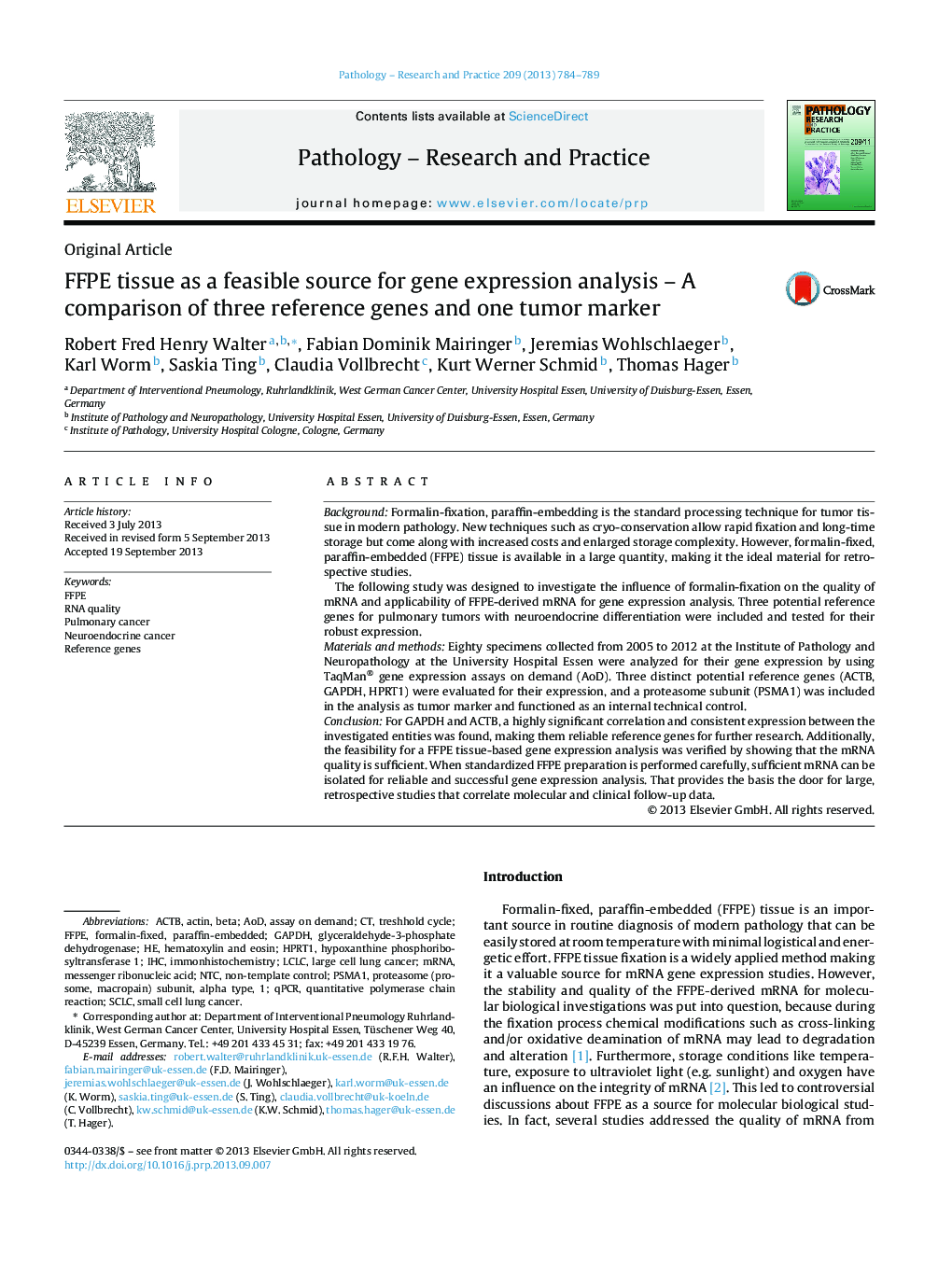| Article ID | Journal | Published Year | Pages | File Type |
|---|---|---|---|---|
| 2155658 | Pathology - Research and Practice | 2013 | 6 Pages |
BackgroundFormalin-fixation, paraffin-embedding is the standard processing technique for tumor tissue in modern pathology. New techniques such as cryo-conservation allow rapid fixation and long-time storage but come along with increased costs and enlarged storage complexity. However, formalin-fixed, paraffin-embedded (FFPE) tissue is available in a large quantity, making it the ideal material for retrospective studies.The following study was designed to investigate the influence of formalin-fixation on the quality of mRNA and applicability of FFPE-derived mRNA for gene expression analysis. Three potential reference genes for pulmonary tumors with neuroendocrine differentiation were included and tested for their robust expression.Materials and methodsEighty specimens collected from 2005 to 2012 at the Institute of Pathology and Neuropathology at the University Hospital Essen were analyzed for their gene expression by using TaqMan® gene expression assays on demand (AoD). Three distinct potential reference genes (ACTB, GAPDH, HPRT1) were evaluated for their expression, and a proteasome subunit (PSMA1) was included in the analysis as tumor marker and functioned as an internal technical control.ConclusionFor GAPDH and ACTB, a highly significant correlation and consistent expression between the investigated entities was found, making them reliable reference genes for further research. Additionally, the feasibility for a FFPE tissue-based gene expression analysis was verified by showing that the mRNA quality is sufficient. When standardized FFPE preparation is performed carefully, sufficient mRNA can be isolated for reliable and successful gene expression analysis. That provides the basis the door for large, retrospective studies that correlate molecular and clinical follow-up data.
